Rung People of Kumaon – Culture, Food & Traditions
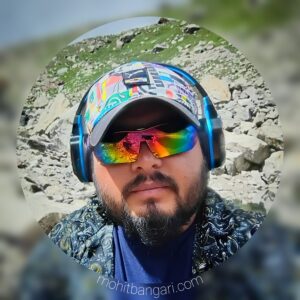
Mohit Bangari
Explore Himalaya With Me!!
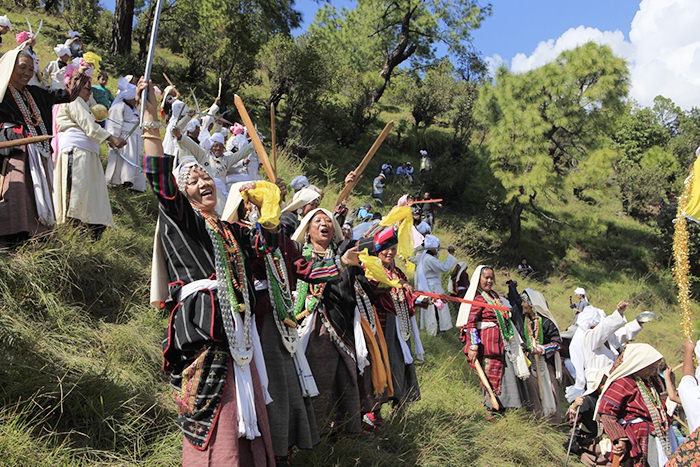
In the far northern reaches of Kumaon, near the Indo-Tibet border, live the Rung people—a unique ethnic Himalayan group known for their deep-rooted traditions, ancient trade history, and vibrant culture. Most Rung settlements are found in Pithoragarh district, mainly in the Darma, Johar (Milam), and Byans valleys, including villages like Gunji, Kuti, Dantu, Dar, Sipu, and Milam.
Table of Contents
🏔️ Introduction: Who Are the Rung People?
Often mistakenly grouped as Bhotiya, the Rung community is distinct, with its own language, food, traditional dress, deities, and rituals.
Their rich cultural fabric weaves stories of trans-Himalayan trade, ancestral deity worship, and a lifestyle adapted to some of the harshest terrains of India. The Rung people have remained the custodians of the ancient Himalayan borderlands—not only geographically but also culturally.
🧬 Rung vs Bhotiya: What’s the Difference?
Although the government lists Rung people under the broad “Bhotiya” Scheduled Tribe, they proudly identify themselves as Rung, not Bhotiya.
“Bhotiya” is a generic term used for people living near the Tibetan border, across Garhwal, Kumaon, and even Sikkim.
Rung people are indigenous to Kumaon, with a historical presence in Johar, Darma, and Byans valleys.
Their spoken dialects—Runglo or Runglwo—are Tibeto-Burman in origin, and different from the languages spoken by other Bhotiya groups in Ladakh or Sikkim.
This distinction is not just linguistic or geographic. It’s deeply cultural. Many historians like Shekhar Pathak, and researchers such as K.S. Valdiya in his book Himalaya: Nature, Man, and Culture have highlighted this clear difference.
🧳 Historical Background: The Traders of the Himalayas
Traditionally, Rung people were trans-Himalayan traders. Before the Indo-China war of 1962, they traded with Tibet via Lipulekh and Unta Dhura passes, exchanging:
Salt, borax, and wool from Tibet
With grains, jaggery, cloth, and ghee from India
They would migrate seasonally—spending summers in their ancestral villages near Tibet, and winters in lower valleys like Dharchula and Didihat. This seasonal migration is called “vertical transhumance.”
After the border closure in 1962, their trade routes stopped. Many Rung families were forced to permanently shift to lower areas and adapt to farming, government jobs, and small-scale business.
🌄 Geography & Rung Settlements
The Rung people are mainly found in three valleys of eastern Kumaon:
Johar Valley (Milam): Near the Milam Glacier and the famous Nanda Devi East base camp.
Darma Valley: Near Panchachuli peaks, includes villages like Sela, Tidang, Duktu, Dantu.
Byans Valley: Near Lipulekh Pass. Villages like Gunji, Nabi, Kuti, and Kalapani are located here.
In winter, they migrate to villages like Sobla, Dharchula, Baluwakot, and Didihat.
This semi-nomadic lifestyle is slowly disappearing, but many Rung still visit their ancestral homes during summer months to maintain traditional connections.
🗣️ Rung Language & Oral Tradition
The Rung people speak Runglwo, a dialect with roots in Tibeto-Burman family. Every valley has slight variations in the dialect. For instance:
Johar dialect differs from Byans or Darma dialect.
However, they all understand each other.
Rung language was never written down traditionally. Knowledge passed orally from generation to generation through:
Folk songs (Rung geet)
Storytelling
Ritual chants
Recently, with the help of organizations like Rung Kalyan Sanstha, some efforts are being made to document the Rung language, including developing scripts and dictionaries.
🏠 Culture & Traditions
👕 Traditional Dress
Men wear:
Woollen chola (coat)
Dhotis or woollen pants
Topi (cap), especially in high altitudes
Women wear:
A special woollen dress called chuba
Silver jewellery like hansuli (neck ring), chandrahaar, earrings
In winter, they wear hand-woven wool shawls made from local sheep wool
💃 Music & Dance
The Rung people love folk songs, especially during festivals and weddings.
Famous songs include “Johar Geet”, sung to welcome guests.
Dances are performed in group circles, with dhol and damau playing traditional beats.
Their songs often reflect themes like love, separation, devotion, and nature.
🙏 Religion, Gods & Beliefs
Most Rung people follow Hinduism, but their belief system has strong animistic and Bon elements, inherited from their trans-Himalayan roots.
They worship:
Isht Devta (Kul Devta) – family deity, differs by clan
Nanda Devi – the supreme goddess of Johar Valley
Kail Bisht, Golu Devta, and Bhumiyal Devta in local form
Kanchyali – guardian deities of homes and fields
Religious rituals are led by village “Pujaris” or “Bon practitioners”, especially during seasonal festivals.
🪔 Important Rituals & Ceremonies
“Devta Nach”: Spirit dance in which a person gets possessed by the local deity and gives predictions.
“Chhang” (barley beer) is offered to gods during rituals.
Death ceremonies are elaborate, with community feasts and mourning traditions.
🍲 Food of the Rung Community
Rung cuisine is very simple but high in nutrition, suited for high-altitude climate. Most dishes are made using millets, barley, wheat, and local herbs.
Popular food items include:
| Dish Name | Description |
|---|---|
| Phaparkaa Roti | Roti made from buckwheat flour (phapra) |
| Chilka Roti | Made from fermented rice batter |
| Thechu | Spicy potato dish cooked in iron pans |
| Bhatt ki Churdkani | Black soybeans curry (also popular in Kumaoni cuisine) |
| Chhang | Traditional local beer made from millet or barley |
| Sidu or Sidku | Steamed wheat bread, sometimes stuffed with jaggery |
They also use wild plants, like linguda (fiddlehead fern), bichu buti (nettle leaves), and herbs found in alpine regions.
🧵 Handicrafts & Local Skills
Rung women are expert weavers. They make:
Woollen carpets, shawls, blankets, and caps
Use local sheep wool or goat wool
Traditional weaving tools are still used in villages like Dantu and Sela
Men were historically traders, but many are now into:
Apple farming
Tourism support jobs
Government services
Their trade legacy still exists in village bartering systems in some areas.
🎉 Festivals Celebrated by Rung People
While they celebrate all mainstream Hindu festivals, some festivals are unique to the Rung community:
| Festival Name | Significance |
|---|---|
| Khatarua | Harvest festival celebrated with bonfires and dancing |
| Fooldei | Welcoming spring, girls decorate village entrances with flowers |
| Harela | Worship of nature and agriculture |
| Badhi Naula | Special to Rung people, related to clan deity |
During Dussehra, many Rung families also worship local Devtas rather than burning Ravana effigies.
🧭 Present Scenario & Community Efforts
Today, many Rung youth have moved to cities for education and jobs. However, strong efforts are being made to:
Preserve Rung language and culture
Encourage summer migration to ancestral villages
Promote eco-tourism and homestay tourism
Organizations like Rung Kalyan Sanstha, Johar Club, and Darma Vikas Parishad are actively working to preserve and promote their culture.
In fact, in my earlier article about Milam Glacier Trek, I have written about Milam village, which is a historic Rung settlement. You can check that post for more insights into their homeland region.
📚 References & Authentic Sources Used
To ensure full authenticity, I’ve referred to:
“Himalaya: Nature, Man and Culture” by K.S. Valdiya
“The Himalayan Border Region” by Christoph von Fürer-Haimendorf
Research articles published by Anthropological Survey of India
Field research shared by Rung Kalyan Sanstha
Archives of Kumaon University’s regional ethnographic studies
These references have helped me present a rich, cultural and historical portrait of the Rung community.
🧭 Conclusion
The Rung people of Kumaon are not just a tribe—they are a living museum of Himalayan heritage. From their language and rituals to their food and folk tales, everything reflects a deep harmony with the mountains.
Even today, their culture teaches us how to live with nature, not against it. As a travel blogger, I encourage everyone to explore Darma, Johar, or Byans valleys, not just for trekking but also to connect with the beautiful Rung community.
You can also explore more on Himalayan treks like Darma Valley, Adi Kailash, and others on my website mohitbangari.com, where I share full guides, routes, permit tips and cultural info.
By – Mohit Bangari
Do you know about Ramman festival of Salud-Dungra village? It’s one of the intangible world cultural heritage of India in UNESCO. You can read a detailed article on this topic here.
Related Post
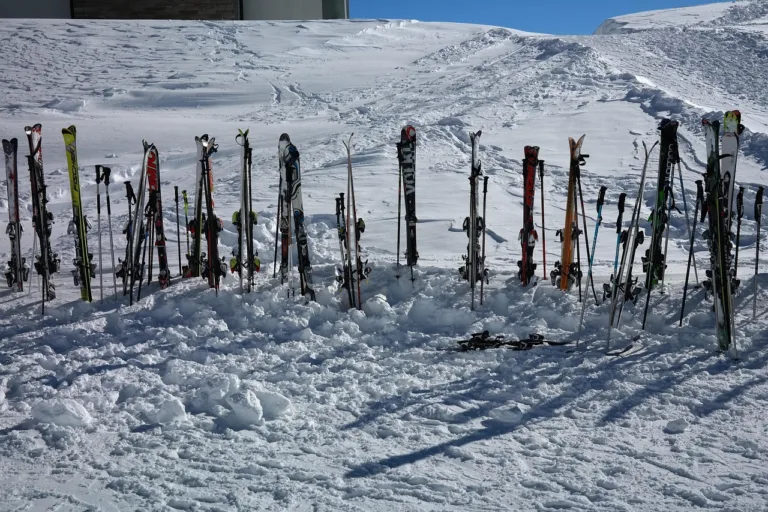

Mohit Bangari
Explore Himalaya With Me!!


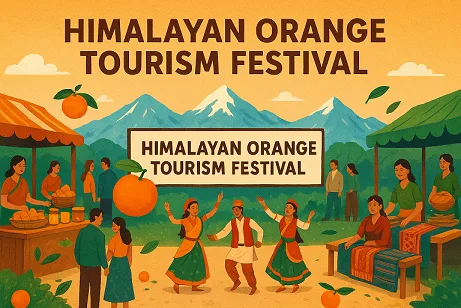

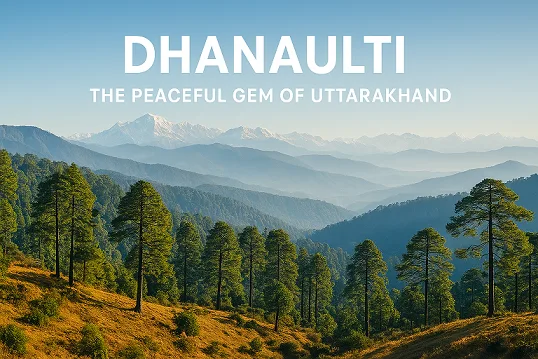
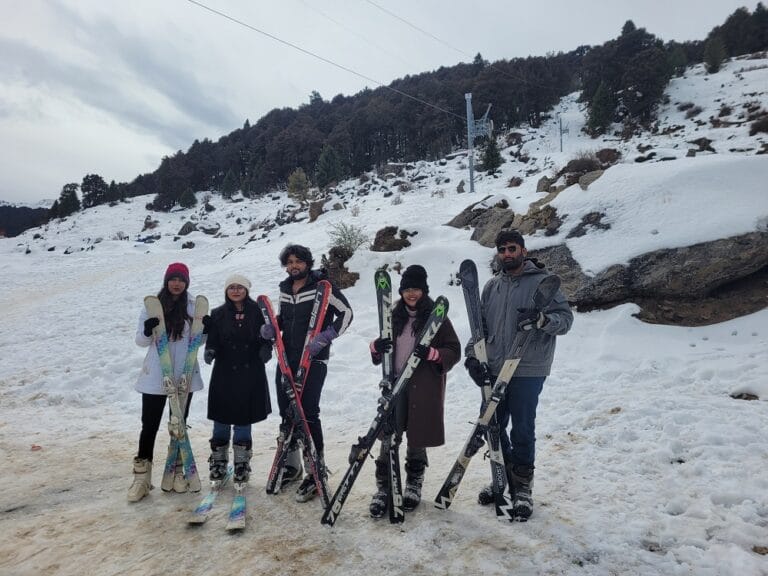
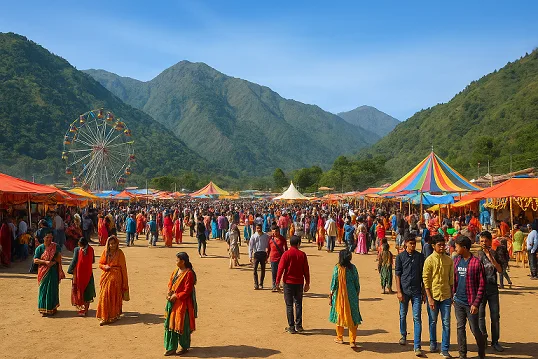
2 thoughts on “Rung People of Kumaon – Culture, Food & Traditions”
This is the right weblog for anybody who needs to search out out about this topic. You realize so much its virtually onerous to argue with you (not that I actually would want…HaHa). You positively put a new spin on a topic thats been written about for years. Great stuff, just great!
Great, at least somebody is recording this.